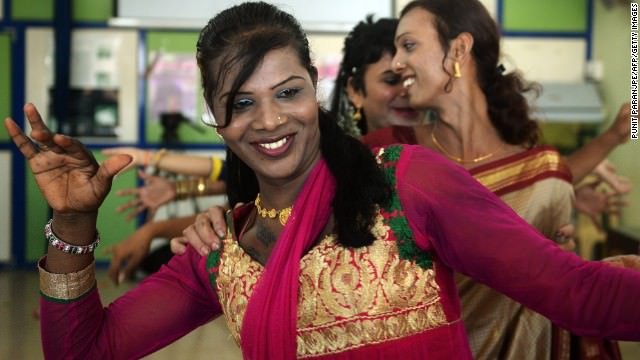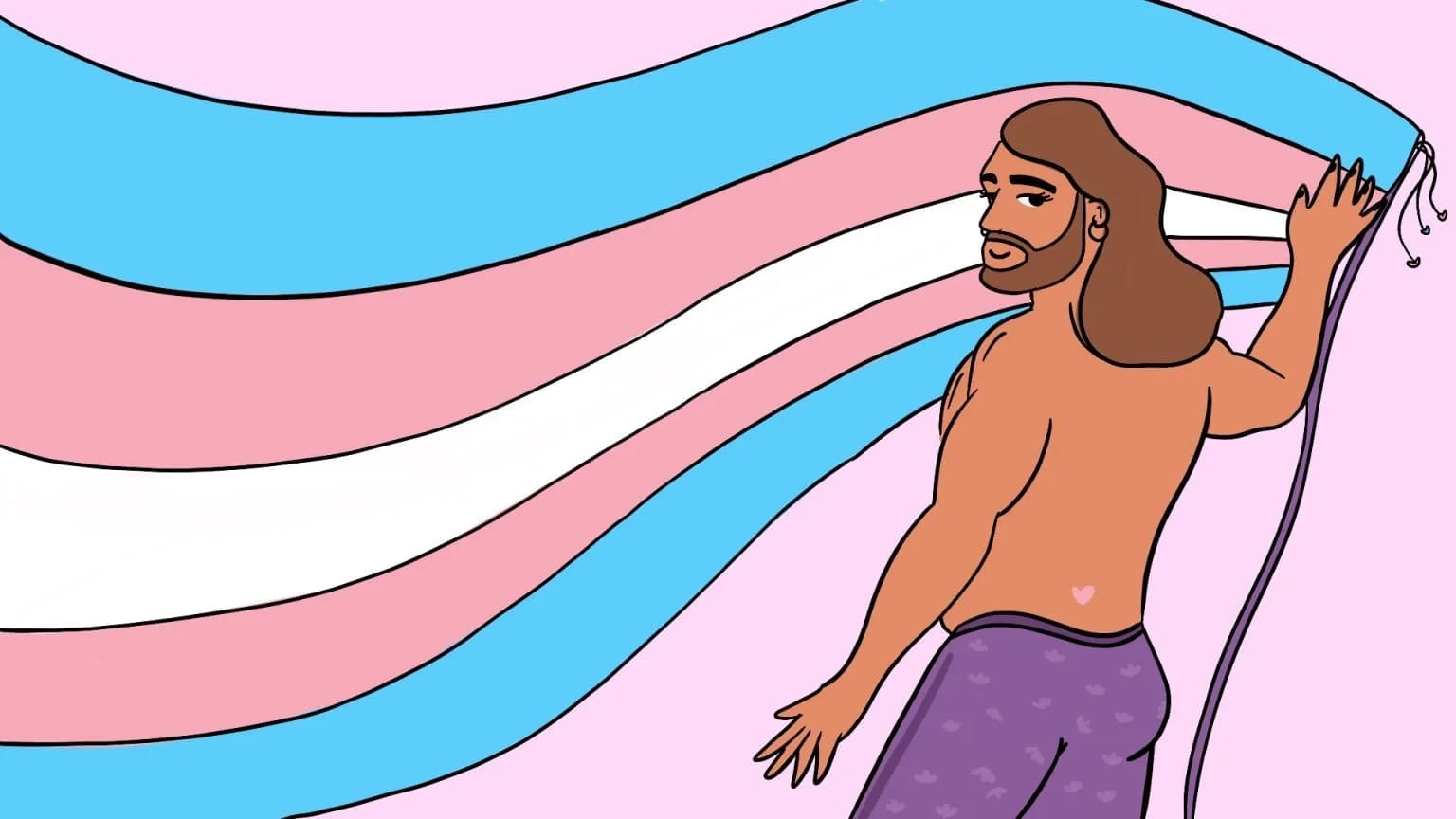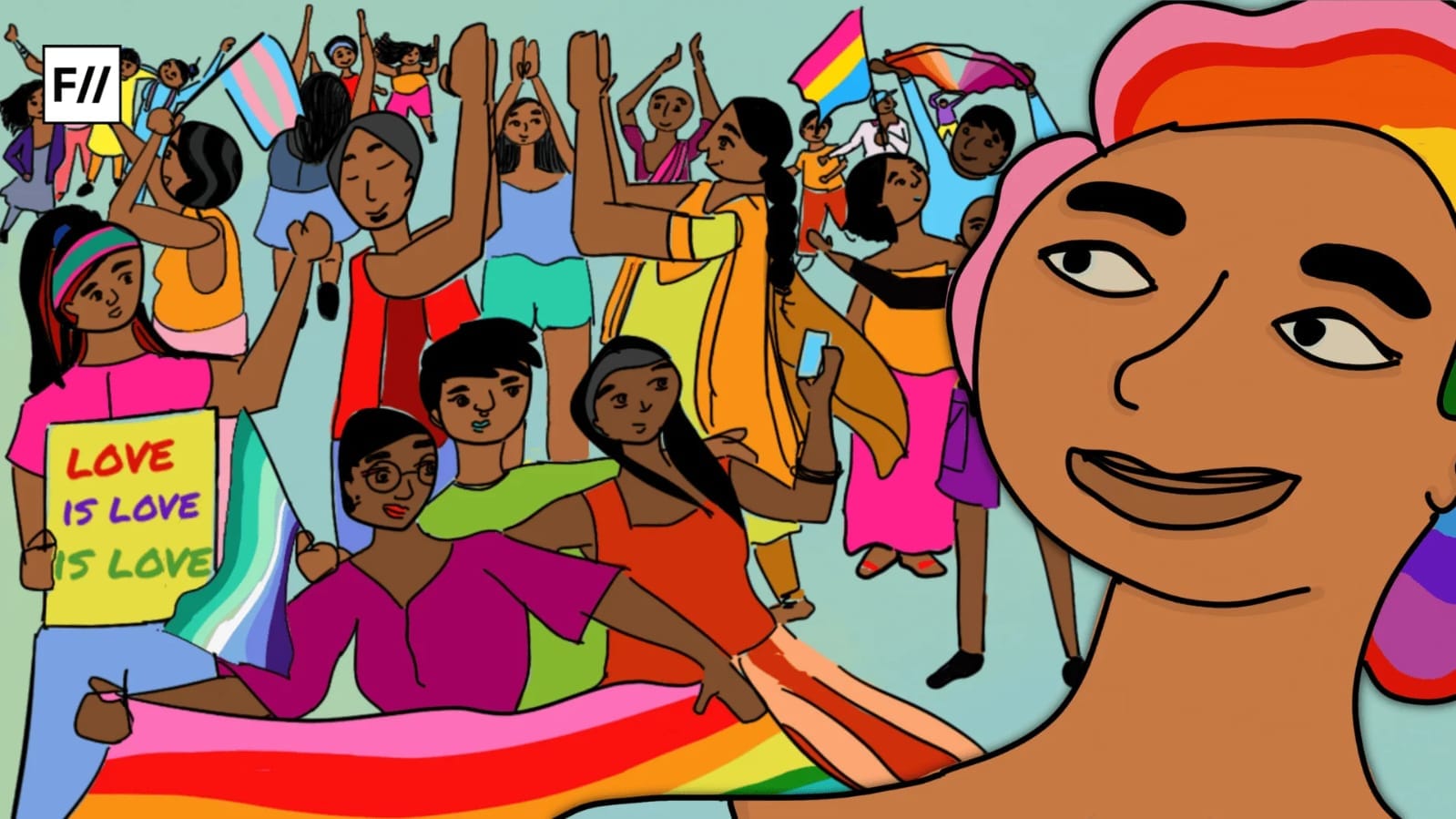It is a recent development that the word ‘transgender’ has made its way into common usage in India as an umbrella term to describe various gender-variant identities. Though there are many local terms to refer to trans feminine gender identities — aravani, kinnar, hijra, thirunangai, mangalamukhi and others — the term ‘transgender’ is increasingly being used in state policies as well as by activists.
Scholars Susan Stryker and Paisley Currah explain, “Because transgender can be imagined to include all possible variations from an often unstated norm, it risks becoming yet another project of colonization, a kind of Cartesian grid imposed on the globe for making sense of human diversity by measuring it within a Eurocentric frame of reference, against a Eurocentric standard.”
On one hand, globalized activism, NGOs, the classification regimes created by the state for administrative control, and the pressures felt by gender-variant communities to make themselves legible (in order to access state benefits) form the politics that have popularized the term “transgender.” On the other hand, there is a particular way in which some trans activists rely on Hindu epics to prove that gender variance has always existed—to counter criticisms of homosexuality and gender variance being “western imports.”
Some of the local terms like ‘aravani’ [1], in fact, are derived from Hindu myths. While this is a result of an unfair burden of proof imposed on vulnerable communities, relying on Hindu myths to affirm our identities gives rise to another danger — of a regressive kind of trans identity politics that does not take into account the brutality of the caste system that finds its origin and sanction in the same Hindu religion.
Caste is a system of vertical social stratification based on exclusion and violence, and intrinsically linked to Hinduism and its notions of purity and pollution. According to it, caste is transmitted intergenerationally, and occupations and social status are fixed based on caste. For the caste system to perpetuate itself, people are required to marry only endogamously (within one’s caste). Similar to the anti-miscegenation laws that were practised in the U.S. until the Supreme Court declared them unconstitutional in 1967, the caste system even today enacts a stringent punishment on those who defy the rules of endogamy.
MANY INTER-CASTE COUPLES WHO DEFY THE RULES OF CASTE ENDOGAMY HAVE BEEN AND CONTINUE TO BE EXPELLED FROM FAMILIES, MADE TO FLEE, AND OFTEN, BRUTALLY MURDERED.
Anti-caste revolutionary and leader, Dr B.R Ambedkar, historically places the system of sati, child marriage and compulsory widowhood as mechanisms to maintain caste endogamy.
According to his formulation, when a woman and a man marry endogamously, and one dies before the other, it creates the problem of the surplus man/surplus woman. Now, after the death of the husband, the surplus woman becomes a threat to endogamy and caste morality if she loves or cohabitates with a person of a different caste. So, the practice of sati, in which the woman burns herself on the funeral pyre of the husband, was created. To prevent the husband from outliving the wife (which would result in the “problem” of the surplus man), compulsory widowhood or marriages of older men to younger women/girls was promoted. Many inter-caste couples who defy the rules of caste endogamy have been and continue to be expelled from families, made to flee, and often, brutally murdered.
I strongly believe that our movements for gender justice compulsorily have to be anti-caste. Apart from the fact that anyone with a sense of justice and equality should do everything to destroy the caste system, there are various ways in which the violence faced by trans communities are rooted in the caste system.
It is a fact that many trans women across castes are disowned by their families, or leave their homes due to violence and join trans/hijra families, which work in a matrilineal (from the mother) system. The 1881 imperial census classified the hijras in Berar, under the title ‘hijada’ and included them under the category of a ‘Mendicant and Vagrant Caste’ whereas in Bombay, they were listed as a caste of dancers and musical instrument players. In Central Provinces, the hijras were included under the caste category of singers and dancers at birth and marriage feasts; beggars.
Whether it is British colonial records, media, court judgments, Hindu myths, modern day cinema, academic writings or social movements, the trans person is a figure who is hyper sexualized, overdetermined by gender characteristics/expression who is engaged in immoral activities and who is to be relegated to the peripheries: the perpetual ‘other’ against whom public decency and caste morality could be constructed, reinforced and perpetuated.
I GREW UP HEARING MY RELATIVES SAY WITH PRIDE ABOUT ME, “YOU KNOW, SHE CAN DO ANYTHING A BOY DOES AND AT MOST TIMES, EVEN BETTER.”
Most narratives of family violence are rooted in the shame that families feel when their kids are trans. Shame and respectability in the Indian context are entirely linked with caste. I have often wondered why most trans men across caste stay with their families longer than trans women. The reasons could be the difficulties in establishing financial independence, the increased control and anxiety over our sexual safety and choices and the fact that masculinity as a trait is more revered than femininity, which is generally seen as a weakness when expressed by a person of any gender. So as a kid, I grew up hearing my relatives say with pride about me, “You know, she can do anything a boy does and at most times, even better.” Many years later, I have wondered whether they would have taken pride if I had been raised as a boy and expressed femininity.
Also read: The Invisible Privileges Of Looking Like A Cis Male
There are many exclusions that trans people face in health care, education, employment and more, all of which which are compounded by factors of caste, class and ability. In developing countries, apart from government hospitals lacking trans-specific health care services, privatisation of health care makes the cost exorbitant and the culpability under medical negligence laws minimal.
Since trans people constitute a group that is neither numerically large nor in possession of much buying power, very minimal funds are allotted to trans-specific medical research. This results in poor knowledge about trans health care even among medical professionals. It is common knowledge that historically until now, a significantly smaller amount is spent on cis women’s health and research than on that of cis men. Thus, compared to cis people, hardly any money or attention is given to trans people; our lives don’t seem to matter to governments or medical institutions
What is the most accessible trans surgery globally? Breast augmentation. Why? Because, in a hetero-pornographic sexual division, cis men want cis women to have bigger breasts. And so, a small number of trans women are able to access a surgical intervention designed for maximising the pleasure of cis men and reclaim it to affirm their own gender identity.
Most trans women in India either beg or do sex work for a living. This could be because most of them are rendered homeless at a young age and drop out of schools. The possibility of continuing education within the hijra family is minimal due to financial and social reasons. Add to that the fact that most cis people are prejudiced. They fear or mock trans women (this is a common representation of trans women in most regional and national cinema) and are not willing to employ them.
Also read: (Mis)Representation Of Hijras In Popular Media
As my sister Living Smile Vidya says, “Begging and sex work have become almost like fixed caste occupations for trans women in India.” The only other jobs are provided by NGOs which depend on HIV funding and retain feudal power structures of having cis, dominant caste people at the decision-making level in high salaried posts with trans women from lower caste backgrounds working in low-paid positions as condom distributors or community mobilisers. Having said that, the fact that NGOs provide a semblance of dignity in employment where a trans woman can work in an office rather than face public and police harassment doing street-based labour cannot be denied.
In November 2014, 53 trans women were rounded up by the police in Bangalore city under the Karnataka Prohibition of Beggary Act, 1975. Trans women who were in any public place were rounded up regardless of whether they were begging or not and forcibly taken to an infamous rehabilitation home called Beggar’s Colony.
Just as certain tribes were deemed criminal in the British colonial period, the entire trans community is targeted and criminalised under various laws like the one mentioned before, the Karnataka Police Act 36 (A), the Immoral Trafficking Prevention Act (which in practise, criminalises all women in sex trade and not just traffickers) the public indecency and public nuisance provisions etc. Trans women are seen as a “polluting” presence along with other marginalised communities that do street vending and other street-based labour. Public indecency and the notion of immorality are concepts intrinsically linked to caste patriarchy.
TRANS COMMUNITIES HAVE A FAMILIAL SYSTEM IN WHICH SISTERHOOD ACROSS CASTE IS POSSIBLE AND OFTEN PRACTICED.
The rejection of endogamous reproductive function by trans people means an abdication of the reproduction of caste relations and labour force making us lesser citizens of the Brahmin empire/Indian nation state. I opened my heart and mind to the possibilities of creating families outside of heteropatriarchy and caste endogamy after I started living among trans communities.
Trans communities have a familial system in which sisterhood across caste is possible and often practised. There are of course, caste practices and differences among trans communities, however the collective experience of being disowned by families, structural exclusions in employment, education and housing create at the very minimum, the possibility of a strong sense of belonging and “consciousness of kind”. I have seen trans women raise orphaned babies into strong, beautiful people.
My most beloved trans brother was raised by his trans mother. I am inspired by so many such stories of resilience, courage, love and beauty. On the most depressing days I just think about how privileged I am, and how much harder I need to fight to destroy systems that oppress me and systems that benefit me
Nina Simone when asked in an interview about what freedom meant to her said, “Lack of fear.” I believe we all need to fight until every single one of us can say, “I have no fear. This is what freedom feels like.”
[1] In the Mahabharata it was prophesied that the Pandavas would win the battle of Kurukshetra only if they sacrificed a ‘perfect’ male from among themselves. Aravan, the virgin son of Pandava prince Arjuna, offered himself up for sacrifice. But he had a request: that he be allowed to spend one night as a married man. No king was willing to give his daughter in marriage only to have her widowed the next day, so finally, Lord Krishna assumed female form and married Aravan, and after a night of sexual bliss, Aravan was beheaded. Some trans women in Tamil Nadu consider themselves to be the female form of Krishna and perform widowhood as Aravanis at the Koovagam festival conducted every year.
Also read: A Queer Sikh Trans Man’s Story Of Transition And Community Formation
Gee Imaan Semmalar is a 29 year old writer, trans activist and theatre artist from India. He co-founded Panmai theatre along with Living Smile Vidya and Angel Glady in 2014 and toured extensively in India and internationally with their debut production Colour of Trans 2.0. He works voluntarily as a working group member of Sampoorna, the largest network for trans* and intersex Indians globally. He scripted, directed and acted in Kalvettukal (Sculptures, 2012) on Trans men in South India. Recently, he co-directed and acted in a stop motion animation film, “Won’t the Real Transformers Please Stand up?” He can be reached at gee.ameena@gmail.com
This piece was originally published on Trans.Cafe and has re-published here with consent.




